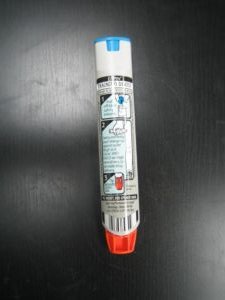It is sad to note that some individuals are allergic to chocolate even though this is one of the tempting treats that some could not refuse to indulge in. An actual allergy to cocoa which is the main component in chocolate is considered rare. The explanation for this depends on the variety of ingredients present in most chocolate products including dark chocolate.
Sensitivities and allergic reactions
In some individuals, there are specific foods that can trigger a number of adverse reactions that you should be familiar with. When it comes to an actual food allergy, the body erroneously perceives the protein present in the food as a threat. The immune system reacts by attacking the protein which results to various effects that can be bothersome. It is important to note that the foods that can initiate unwanted reactions that do not involve the immune system are referred to as sensitivities or intolerance. Intolerance to a particular food is less severe than an allergic reaction but can still cause discomfort to the individual. If you want to learn more about food intolerance, click here.

Eating pure chocolate
It is important to note that pure chocolate is derived from cocoa beans. These beans are fermented, dried and roasted in order to create chocolate. Chocolate has two main components – cocoa and cocoa butter. These are usually separated as part of the processing method. The cocoa is comprised of the active ingredients of chocolate including the caffeine and theobromine which are stimulants and the flavor compounds. As for the cocoa butter, it is the fat that provides pure chocolate its texture and richness. Any allergy to any of these components is rare but already known. The individual might be intolerant to the theobromine or caffeine which can trigger adverse reactions.
Products made out of dark chocolate
The commercialized dark chocolate is comprised of various additives that are designed to improve its flavor, texture, shelf life, profitability and handling qualities. Most of these additives can be considered as allergens or intolerance triggers. The ideal brands of chocolate only add sugar, vanilla and soy lecithin but the low quality varieties can contain soy, dairy products, gelatin, egg-derived lecithin, corn syrup and other sweeteners.
Cross contamination in the factories can also cause trace amounts of nuts, eggs, gluten, peanuts and other allergens. Always remember that low quality dark chocolate can also include emulsifiers, antioxidants and preservatives that can lead to reactions among sensitive individuals.
Diagnosing an allergy to chocolate
It is difficulty to differentiate between an actual chocolate allergy and sensitivity to some of the ingredients in chocolate. This would require several tests in order to determine which of the ingredients are responsible. An actual chocolate allergy triggers a reaction with pure non-alkalized cocoa while intolerance to certain ingredients can take some time to accurately pinpoint. An individual who is actually allergic to chocolate can eat the low-quality varieties in the market. As for those who react to the additives, he/she can eat pure chocolate varieties that are higher in quality.
